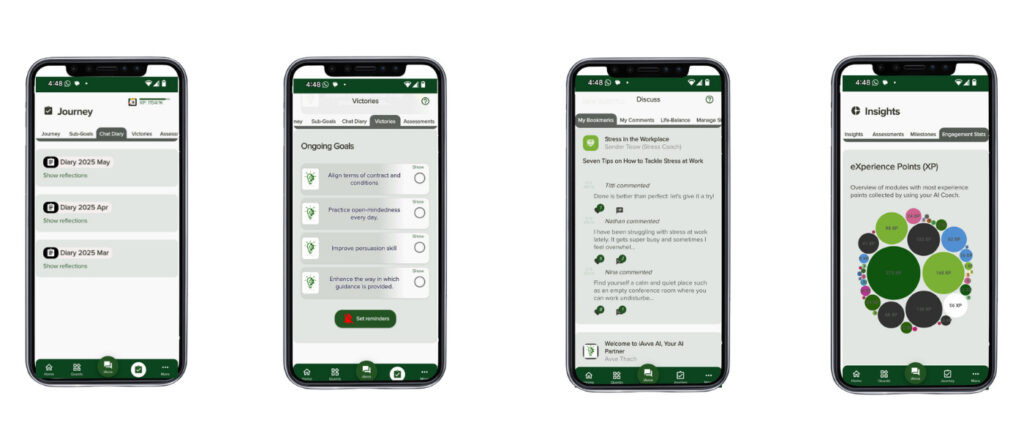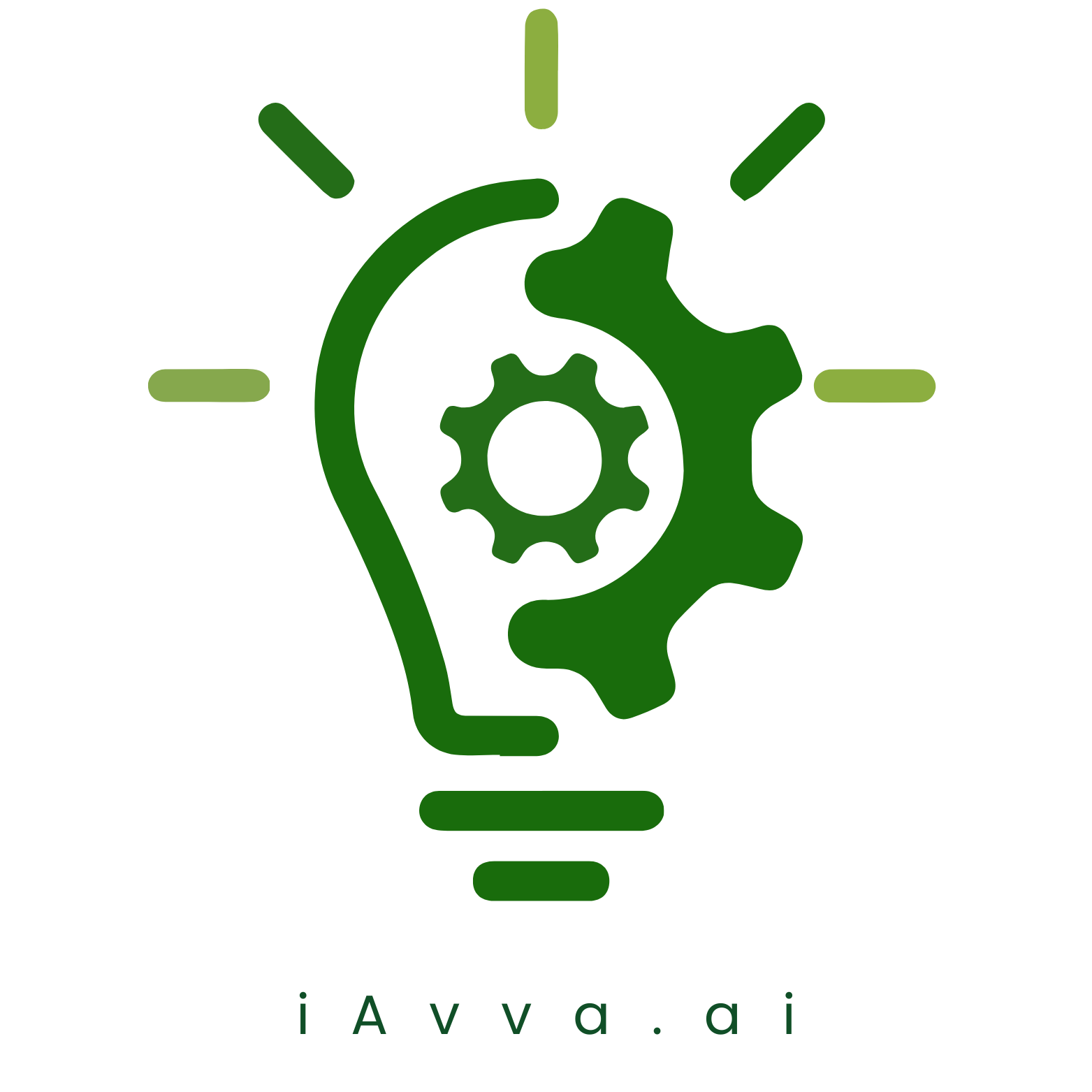**SEO Title: Corporate Training: A Key to Employee Development and Organizational Success** **Keyphrase: Corporate training programs** Download iAvva AI https://iavva.my-ai.coach/#/
Key Takeaways
- Corporate training is crucial for enhancing employee skills and performance, ultimately benefiting the organization as a whole.
- Identifying key areas for employee development is essential for creating targeted and effective training programs.
- Tailoring training programs to individual needs ensures that employees receive personalized development opportunities.
- Utilizing technology for training delivery can enhance accessibility, engagement, and effectiveness of the training programs.
- Implementing hands-on learning experiences can significantly improve employee retention and application of new skills.
Corporate training programs are essential for any organization aiming to thrive in today’s fast-paced business environment. They serve as a foundation for employee development, ensuring that team members possess the necessary skills and knowledge to perform their roles effectively. In an era where technology and market demands evolve rapidly, investing in corporate training is not just beneficial; it is imperative.
Companies that prioritize training often see increased employee engagement, higher retention rates, and improved overall performance. Moreover, corporate training programs can significantly enhance an organization’s competitive edge. By equipping employees with the latest industry knowledge and skills, companies can adapt more swiftly to changes in the market.
This adaptability is crucial for maintaining relevance and achieving long-term success. For instance, a study by the Association for Talent Development found that organizations with comprehensive training programs enjoy 218% higher income per employee than those without. This statistic underscores the importance of corporate training in driving both individual and organizational success.
Identifying Key Areas for Employee Development
To create effective corporate training programs, it is vital to identify key areas for employee development. This process begins with a thorough assessment of the current skills and competencies within the organization. HR leaders and managers should collaborate to pinpoint gaps in knowledge and skills that may hinder performance.
For example, if a company is transitioning to a new software system, training in digital literacy and software proficiency becomes essential. Additionally, understanding the specific needs of different departments can help tailor training initiatives. Sales teams may require training in customer relationship management, while IT departments might benefit from cybersecurity awareness programs.
By focusing on these key areas, organizations can ensure that their corporate training programs are relevant and impactful, ultimately leading to improved employee performance and satisfaction.
Tailoring Training Programs to Individual Needs

One size does not fit all when it comes to corporate training programs. Tailoring training initiatives to meet individual needs is crucial for maximizing their effectiveness. Employees have diverse learning styles, backgrounds, and career aspirations, which means that a personalized approach can yield better results.
For instance, some employees may thrive in hands-on workshops, while others may prefer online courses or mentorship opportunities. To achieve this level of customization, organizations can leverage assessments and feedback mechanisms. Regularly soliciting input from employees about their training preferences and career goals can help HR leaders design programs that resonate with their workforce.
By aligning training with individual aspirations, companies not only enhance employee engagement but also foster a culture of continuous improvement.
Utilizing Technology for Effective Training Delivery
| Metrics | 2019 | 2020 | 2021 |
|---|---|---|---|
| Number of online training sessions | 150 | 200 | 250 |
| Percentage of employees completing online courses | 75% | 80% | 85% |
| Feedback rating for online training | 4.2 | 4.5 | 4.7 |
| Cost savings from virtual training | 10,000 | 15,000 | 20,000 |
Incorporating technology into corporate training programs can significantly enhance their effectiveness and accessibility. E-learning platforms, virtual classrooms, and mobile applications provide employees with flexible learning options that fit their schedules. This flexibility is particularly important in today’s remote work environment, where employees may be juggling multiple responsibilities.
These features can make training more engaging and enjoyable for employees. A report by LinkedIn Learning revealed that 94% of employees would stay at a company longer if it invested in their career development.
By utilizing technology to deliver corporate training programs, organizations can create a more engaging learning experience that ultimately leads to higher retention rates.
Implementing Hands-On Learning Experiences
Hands-on learning experiences are a powerful way to reinforce knowledge gained through corporate training programs. These experiences allow employees to apply what they have learned in real-world scenarios, enhancing retention and understanding. For example, role-playing exercises can help sales teams practice their pitches, while project-based learning can enable IT professionals to tackle real challenges.
Incorporating hands-on experiences into training programs also fosters collaboration among team members. When employees work together on projects or simulations, they build relationships and improve communication skills. This collaborative approach not only enhances learning but also strengthens team dynamics within the organization.
Encouraging Continuous Learning and Skill Development

Corporate training should not be viewed as a one-time event but rather as an ongoing journey of continuous learning and skill development. Organizations must cultivate an environment where employees feel encouraged to pursue further education and professional growth. This can be achieved through various initiatives such as offering access to online courses, hosting lunch-and-learn sessions, or providing stipends for external training opportunities.
Encouraging continuous learning also involves recognizing and rewarding employees who take the initiative to develop their skills.
A culture of continuous learning not only benefits individual employees but also contributes to the overall success of the organization.
Measuring the Impact of Training on Employee Performance
To ensure the effectiveness of corporate training programs, it is essential to measure their impact on employee performance. Organizations should establish clear metrics and key performance indicators (KPIs) that align with their training objectives. For instance, if the goal is to improve sales performance, tracking metrics such as conversion rates or revenue generated can provide valuable insights into the effectiveness of the training.
Additionally, gathering feedback from participants after completing training programs can help identify areas for improvement. Surveys and assessments can provide valuable data on how well employees retained information and applied it in their roles. By continuously evaluating the impact of corporate training programs, organizations can make informed decisions about future initiatives and adjustments.
Providing Ongoing Support and Resources for Development
Corporate training programs should be complemented by ongoing support and resources for employee development. This support can take various forms, including access to mentorship programs, coaching sessions, or online resources such as articles and webinars. Providing employees with these resources ensures that they have the tools they need to continue their learning journey beyond formal training sessions.
Moreover, creating a supportive environment where employees feel comfortable seeking help or guidance is crucial for fostering growth. HR leaders should encourage open communication and collaboration among team members to facilitate knowledge sharing. When employees know they have access to support, they are more likely to take ownership of their development and seek out opportunities for growth.
Creating a Culture of Learning and Growth within the Organization
A successful corporate training program is rooted in a culture of learning and growth within the organization. Leaders play a pivotal role in shaping this culture by modeling behaviors that prioritize continuous improvement and professional development. When executives demonstrate a commitment to their own learning journeys, it sets a powerful example for employees at all levels.
Additionally, organizations should celebrate learning achievements and milestones publicly. Recognizing employees who pursue further education or complete training programs fosters a sense of pride and encourages others to follow suit. By creating an environment where learning is valued and celebrated, organizations can cultivate a workforce that is motivated to grow and excel.
Leveraging External Training Resources and Partnerships
While internal corporate training programs are essential, organizations should also consider leveraging external resources and partnerships to enhance their offerings. Collaborating with industry experts or educational institutions can provide access to specialized knowledge and skills that may not be available internally. For example, partnering with a local university for workshops or certifications can enrich employee development initiatives.
Furthermore, external training resources often bring fresh perspectives and innovative approaches to learning. By incorporating diverse viewpoints into corporate training programs, organizations can foster creativity and adaptability among their workforce. This collaboration not only enhances employee skills but also strengthens relationships within the industry.
Developing a Long-Term Training and Development Strategy
Finally, organizations must develop a long-term training and development strategy that aligns with their overall business goals. This strategy should encompass both immediate training needs and future skill requirements as the industry evolves. By taking a proactive approach to employee development, organizations can ensure they remain competitive in an ever-changing landscape.
A well-defined strategy should include regular assessments of employee skills, ongoing feedback mechanisms, and clear pathways for career advancement through training initiatives. By investing in long-term employee development, organizations not only enhance individual performance but also contribute to overall organizational success. In conclusion, corporate training programs are vital for fostering employee development and driving organizational success.
By understanding the importance of these programs, identifying key areas for development, tailoring initiatives to individual needs, utilizing technology effectively, implementing hands-on experiences, encouraging continuous learning, measuring impact, providing ongoing support, creating a culture of growth, leveraging external resources, and developing a long-term strategy, HR leaders and executives can create a thriving workforce ready to meet the challenges of tomorrow’s business landscape.
Corporate training is an essential component for businesses aiming to enhance their workforce’s skills and adaptability in a rapidly changing environment. A related article that delves into the importance of leadership development within corporate training is titled “Maximizing Potential: The Power of an Executive Coach.” This article explores how executive coaching can significantly impact leadership effectiveness and organizational success. For more insights, you can read the full article by following this link.
FAQs
What is corporate training?
Corporate training refers to the process of providing employees with the knowledge and skills they need to perform their job effectively. This can include training on specific job tasks, company policies, industry regulations, and professional development.
Why is corporate training important?
Corporate training is important because it helps employees stay updated with the latest industry trends, improves their job performance, and enhances their overall productivity. It also helps in employee retention and satisfaction, as they feel supported and valued by their employer.
What are the different types of corporate training?
There are various types of corporate training, including on-the-job training, classroom training, online training, workshops, seminars, and conferences. Training can be specific to job roles, technical skills, soft skills, compliance, leadership, and management.
How is corporate training delivered?
Corporate training can be delivered through various methods such as in-person training sessions, virtual classrooms, e-learning platforms, webinars, workshops, and conferences. The delivery method depends on the nature of the training and the needs of the employees.
Who provides corporate training?
Corporate training can be provided by internal trainers within the organization, external training providers, industry experts, or professional training organizations. Some companies also have dedicated training departments or learning and development teams to oversee the training programs.

















Leave a Reply